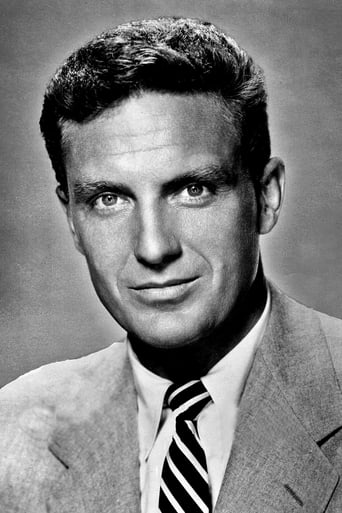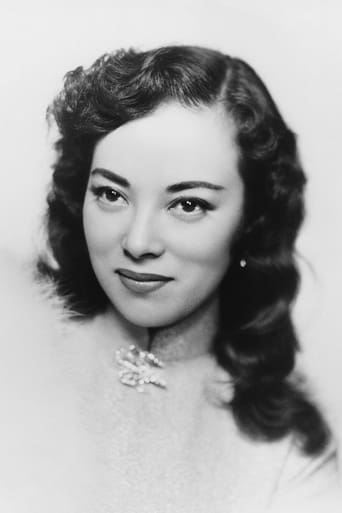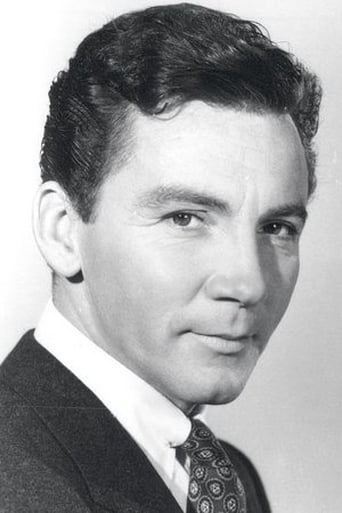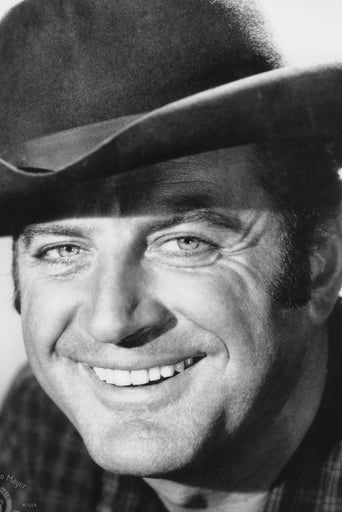XoWizIama
Excellent adaptation.
Derry Herrera
Not sure how, but this is easily one of the best movies all summer. Multiple levels of funny, never takes itself seriously, super colorful, and creative.
Cheryl
A clunky actioner with a handful of cool moments.
WILLIAM FLANIGAN
Viewed on DVD. Cinematography = ten (10) stars; locations =ten (10) stars; subtitles = one (1) star. Director Samuel Fuller presides over a film that is mostly a disaster. The plot is pedestrian (American Yakusa (all former U.S. military personnel) doing business in Tokyo), the script is unimaginative (lines seem to be invented by bored actors), the protagonist roles are miscast (see below), and directing and editing are uneven and jumbled (continuity between scenes appears to be an after thought). The movie's title seems to have been picked out of a hat; it bears no relationship to the story. The real stars of this photo play are it's: (1) cinematography (Cinemascope, color) which is simply beautiful (Fuji-San (Mount Fuji) is stunning and never looked better in the winter) and extremely imaginative; and (2) on-location scenes showing what Tokyo looked like about 10 years after the war. The latter provides a fascinating, time-capsule view of street and dock life. (Just ignore the relocation of the colossal Daibutsu (Great Buddha) from Kamakura to Tokyo!) One lead actor is over the hill and it clearly shows; the other lead actor provides a stiff-as-a-board performance (which became his trademark). The part of the Japanese "kimono girl" calls for a Japanese-Japanese actress, not an Americanized-Japanese actress who is also too old for the role. The film score is okay, but not very imaginative. There are no subtitles for Japanese line readings which are frequent and can be rather long. Highly not recommended! WILLIAM FLANIGAN, PhD.
RanchoTuVu
Dishonorably discharged Ex-US army soldiers run a crime ring in post WW2 Tokyo. Led by Sandy Dawson (Robert Ryan), they, perhaps mistakenly, kill an active duty soldier during a job they pull as the film opens. Robert Stack plays an army agent sent over to infiltrate the ring, a group of army rejects memorably led by Robert Ryan. The finale is a totally gripping roof- top chase high over Tokyo's crowded streets. The film captures a sense of Japanese life and has impressive cultural depth, probably thanks to ace director and writer Sam Fuller. The idea itself of dishonorable discharges forming a crime ring in Tokyo is fairly well inspired, and is taken into impressive detail as the some of the guys in the gang try to be the ichi ban or number one next to Robert Ryan. Ryan has seldom looked better, capturing a smug sense of control with underlying ruthlessness. Stack as the army's secret agent, isn't bad either.
bkoganbing
House Of Bamboo came out in 1955 three years after the Japanese Peace Treaty effectively ended the occupation of Japan that began post World War II. Americans must have been familiar sight on the streets of Japanese cities still in 1955, we certainly had enough military personnel there. If you don't recognize that fact than you will be puzzled as to how a gang of Americans crooks could operate the way they do in the streets of Tokyo.For those of you who don't recognize it screenwriter Harry Kleiner took the screenplay he wrote for the Henry Hathaway classic, The Street With No Name and set in down in post occupation Japan. Robert Ryan plays the gang leader part that Richard Widmark had. He's recruited a gang of former military misfits who spent more time in the stockade than in combat and made them into an effective heist gang. Ryan's got other interests, but his main income is from some well planned robberies.The USA military intelligence gets involved when Ryan hijacks a train with military hardware and kills a soldier. Going undercover is Robert Stack in the Mark Stevens part. Unlike The Street With No Name, Stack's allowed a little romance here in the person of Japanese actress Shirley Yamaguchi. In The Street With No Name it was Widmark who had the girlfriends and Stevens was strictly business. Sessue Hayakawa is also in the cast as the Japanese police inspector.There's a gay subtext in the film with the relationship of Ryan with his number two, Cameron Mitchell. When Stack starts to take his place in the gang hierarchy, Mitchell reactions are of pure jealousy. In fact Mitchell's reactions are what sets in motion the climax of the film.Which you know if you've seen The Street With No Name. House Of Bamboo boasts some mighty nice location shots of postwar Tokyo which looking at it you would hardly believe what a difference a decade might make. The title House Of Bamboo is the place that Ryan lives in and it's a pre-war structure typical of the Tokyo before General Doolittle inaugurated US bombing raids. Those wooden houses went up like tinder boxes. Note the more modern look Tokyo has in 1955.The color might disqualify House Of Bamboo from the genre, but the film as the look and feel of a good noir film. Which is as good a recommendation as I can give it.
secondtake
House of Bamboo (1955)If you ever wondered if a film noir lead male could just be anyone, that he doesn't need talent beyond being tough and muttering terse nuggets, watch Robert Stack struggle in this film. He tries to pump up all the stereotypes, but he's playacting all the time, and because he's in most of the movie, it falls flat over and over. This is a slow-going, strained movie, and even though it's ambitious in many ways, it will mostly seem routine. All of this took me by surprise, because some of director Samuel Fuller's famous films, like Naked Kiss, are anything but routine.Not that this isn't a gorgeous film. Joe MacDonald is a first rate black and white photographer (film noir and other films), and he applies his visual sense to every scene. All in Cinemascope color! Yes, if you don't mind a relatively dull movie and can just watch, this one is really terrific pageantry. It uses the wide screen better than most, the framing and blocking really worth the ticket alone. And everything is done on location in Japan in the 1950s, just when the country is trying to shed itself of American occupation. Because of this there are many scenes that are almost travelog stuff, and all the streetsides scenes and interiors, the views along the canal and the big overviews at the end, are just superbly photographed.Of course, then you have to ask about all the many films made by Japanese filmmakers at the same time...some of which are not only more authentic, but much better movies all around. There's no use trying to apologize. The acting is totally uneven (the scenes with Robert Ryan come to life, a testimony to his presence and energy), and the plot is dull, lacking a conflict that is clear. There's only so far you can take ambiguous tension in a pretty movie like this. This is a retelling of sorts of a more gripping (and in some ways more formulaic) film, Street with no Name, which is a classic of its type. So kudos absolutely to Fuller for taking this to Japan, and for making it fresh in at least that one sense. We still could benefit from a more tightly conceived scenario, and maybe a less culturally stereotyped view of the city, where sure they had very mixed feelings about brash Americans.MacDonald's photography rules on this on. For example, look at the scene 50 minutes in, and see how simple it is to transform an ordinary conversation to something that has visual sophistication. There's a lot to look at. Keep watching and you'll see more astonishing visuals and set design (if you can call the locations shots that, with smoke pots and running men with tracking camera), all at a gravel pit. Really first rate.







